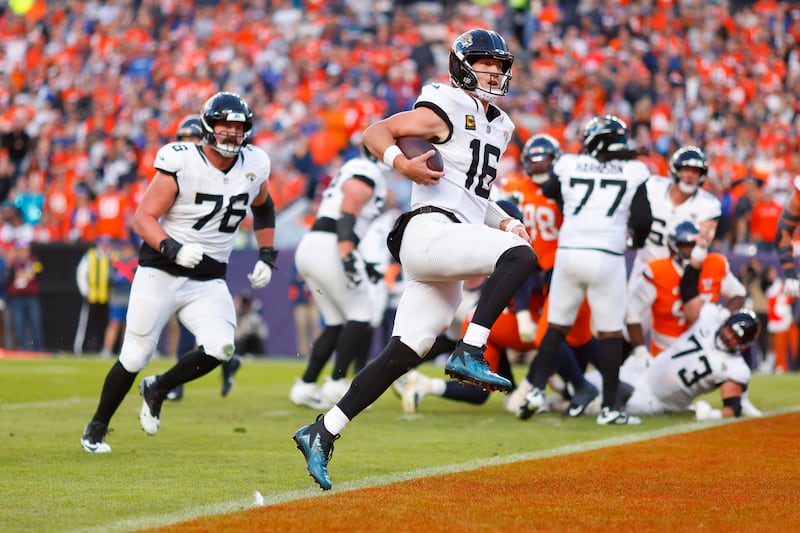Two rugby games of enduring significance took place over the 24 hours of Ireland’s national holiday.
On St Patrick’s Day – a Friday – Gonzaga College won its first ever Leinster Senior Cup with a 35-31 win over Blackrock, the traditional overlords of the ancient competition. The game had everything; nine tries, a fevered atmosphere and, on the field, a spirit of imagination and carefreeness that has largely been coached out of the elite professional game. There was a mesmerising throwback about the creative play of Stephen McMahon, the Gonzaga outhalf.
On Saturday, the crowds gathered at the Aviva and around their television screens to say goodbye to another outhalf. Ireland played against England for the Grand Slam. It would be Johnny Sexton’s last home game in a green shirt. The game was teak-tough, gripping and the pundits agreed that Ireland’s game plan was superbly “executed”– a popular phrase which contains multitudes. Ireland capped a fabulous spring by completing the Slam, substantiating their place as the number one ranked rugby team in the sport and preparing for next autumn’s World Cup in buoyant mood.
The big talking point of that Grand Slam game was the 42nd-minute collision between the opposition fullbacks, England’s Freddie Steward, and Ireland’s Hugo Keenan. In the original play, it looked like an innocuous coming together between two players chasing a loose ball after an untidy pass, which Keenan got to first. Slow motion replays showed that Steward had turned his shoulder as he came together with the Irish player. Keenan was stooped to collect the ball and his head met Steward’s shoulder, to create a juddering impact.
READ MORE

Low “oohs” went around the stadium as the sequence was replayed on the big screens at various angles. While there was no malice on Steward’s part – his first reaction was to check on Keenan – it became clear he was in trouble. “I was braced for impact. It was milliseconds,” the Englishman pleaded with referee Jaco Peyper who replied: “I understand. In the current climate, you are upright, you’re into contact,” before issuing a red card. Social media instantly lit up with former England luminaries such as Ben Foden, Will Carling (“a bloody joke”) and Jason Robinson decrying the decision. But Peyper’s phrase was instructive. What is the “current climate” for rugby?
Just five days before that Grand Slam finale, 55 amateur rugby players now suffering neurological impairments joined the class action concussion lawsuit against World Rugby, the Rugby Football Union (England’s governing body) and the Wales Rugby Union, claiming that those governing bodies failed to take reasonable action to protect them. They join a group of 200 players, including former Irish players, in taking the legal action. In September last year, three players initiated legal action against the Irish Rugby Football Union (IRFU) in what are believed to be concussion-related cases. The consequences of the first decades of rugby’s professional era are being totted up and the results are dismaying.
If you think there is enough evidence that suggests you shouldn’t be subjecting your brain to this; you are an adult. You can make that decision
— Prof Colin Doherty
Three years ago, Steve Thompson, the hooker who played in England’s World Cup winning team of 2003, revealed he had early on-set dementia. He could remember nothing of the final he won 17 years earlier. “I finished up with nothing, really, at the end of it,” he told the Guardian’s Andy Bull of his rugby life in a harrowing interview. Last year, it was the turn of Ryan Jones, a rugby folk hero in Wales: a Newport boy made good, capped 75 times for his country now informed that he had received the diagnosis of probable chronic traumatic encephalopathy (CTE). “I feel like my world is falling apart. And I’m really scared because I’ve got three children and three stepchildren, and I want to be a fantastic dad,” Jones said. He warned that rugby union is “walking headlong with its eyes closed into a catastrophic situation”.
That is rugby’s terrifying and bleak conundrum. The game has never been faster; the players never as strong. At an elite level, the sport is slickly marketed and transfers beautifully on to television, attracting a large casual audience. Women’s rugby is going from strength to strength. Any follower of the Ireland men’s team would find them a likable group: easily identifiable role models led by an affable Englishman, Andy Farrell. The dilemma for parents whose young child is keen to start rugby is what their child might be letting themselves in for down the line. At the back of their minds may be a fundamental question: is it safe?
Share your story
Awareness
“As a field of research, it is intensely political,” says Prof Colin Doherty, chair in epileptology at Trinity College Dublin’s school of medicine and consultant neurologist at St James’s Hospital. Prof Doherty is a leading advocate for heightening awareness about the dangers contained within the sub-concussive impact blows that are part of rugby – and other contact sports.

“It is open to constant negative appraisals and people telling you that your evidence doesn’t prove anything. It mirrors what you would see in a public health debate,” Prof Doherty says.
“I remember when seat belts came in and my dad saying: ‘I’m not going to be constrained by seat belts.’ The idea that you could prove that people were safer with belts came under scrutiny.
“I do think this is a public health issue. We have 400,000 going out to play contact sport – probably the highest participation in Europe, probably because of the GAA, actually.
“It is an enormous number of people. If even one per cent of those are getting a bang to the head that causes them to have symptoms, which is the definition of concussion; that is 4,000 people,” he explains.
“And if 400 of those are suffering from repeated blows, where you are subject to protocols, that is still 400 people a week. And what if one per cent of those has whatever susceptibility in the brain that causes them to develop CTE eventually: that is four people. That figure is not implausible to me. It is possibly much more than that: I am just saying that if [it] is even one per cent...”
In 2017, Prof Doherty was one of the keynote speakers at a symposium on concussion. At that stage, he was “gung-ho” about trying to protect all players but has since come to believe that advocating for change within the professional game is a lost cause.
“You know what? I don’t even care any more about guys who are adults who are making these decisions and getting paid a lot of money to play. The dangers are known,” Prof Doherty says.
“If you think there is enough evidence that suggests you shouldn’t be subjecting your brain to this; you are an adult. You can make that decision. I have no intention of sitting down to debate you.
“But if you are telling me that I am letting some coach-dad on the sideline who knows nothing and is not a doctor and he is in charge of those decisions? He is in charge of the long-term health of my child’s brain?’’
While the removal-from-play protocols are good, what are they doing about the sub-concussive blows? I think they are ignoring it
— Prof Colin Doherty
Prof Doherty is not against rugby. He played the game in his youth – at Gonzaga, as it happens. He was at this year’s cup final. The appeal of the game is obvious to him, and he feels that in the initial stages of children’s rugby, the mental and physical benefits of engaging in a team sport outweigh the concerns given that the number of blows encountered in that age group is “relatively low”.
“But there is a shift that occurs, probably around the age of 13,” he says.
Prof Doherty believes that rugby is not safe in its current form. He stresses that the protocols put in place by the IRFU, and other leading sports bodies, are taken very seriously.
“But my whole scientific hypothesis on this has been and is now: if you take concussion... it is a strange, interesting term. For us as doctors, it is synonymous with mild traumatic brain injury. And when you say that, it changes the nature of the discussion,” Prof Doherty says.
“So, I think while the removal-from-play protocols are good, what are they doing about the sub-concussive blows? I think they are ignoring it.
“If you felt a dose of blows was a big problem you would immediately stop contact during training.
“That is what the Americans did in American football. They just stopped it. They stopped heading the ball below the age of 11 in soccer. At least someone is taking seriously that there is a dosing issue here.
“In rugby, most head injuries happen to the tackler. You need to stop contact. And I am not sure they want to do that. People talk about tackle technique and all this helping. I am not sure there is much evidence of that.”

There is a vibrant rugby club in Trinity College. Rory Clarke recently joined the coaching staff for the second team. Two seasons ago, he was the Trinity under-20s captain. As a boarder in Glenstal Abbey, he quickly came to love rugby but decided to stop playing the sport at 20 years of age.
Clarke had his first concussion in his Junior Cup year and did his 23 three days out. “Going forward, there were one or two more. The tally kept climbing as I went through,” Clarke says. At Trinity, he had concussions in December 2018 and two more in August and November of 2019.
“I should reiterate that in school and in Trinity, the 23 days for any suspected concussion was absolutely upheld,” Clarke says.
“And even in school, it was a boarding school, I would have the nurse coming in and waking me up every half-hour to check my pupils. Everything was taken very seriously.”
In November 2019, he decided to take a complete break from the game for a few months, but when he made his comeback, off the bench against Blackrock in Stradbrook in January, he immediately felt off after what was a routine knock.
“I made a few hits,” he recalls of his final minutes on the field.
“I was in a ruck and it wasn’t a big collision to my head; it was someone falling over. But I got some kind of knock, and it was quite light.
“But I started getting blind spots in my eyes. I thought it was migraine, which I’ve always had, predating the concussions.
“Then I thought: hang on, think about the circumstances. I came off. Going home, I felt incredibly ill. I vomited that night. And that, really, is why I stopped.”
For my second-last concussion, I was really, really confused. I had just recently moved house and wasn’t exactly sure of where I was going home to
— Rory Clarke
The emotional toll of quitting a sport he still loves was considerable. Still, the necessity of stopping made it easy for him. In total, the number of concussions he acquired was the low double digits. The symptoms varied: sometimes he would feel a bit hazy.
“Other times you can get a bit panicky, afterwards, after you are taken off,” Clarke explains.
“You don’t know where you are or what is going on. I remember that for my second-last concussion, I was really, really confused. I had just recently moved house and wasn’t exactly sure of where I was going home to.”
Clarke is unequivocal that he made the right decision and, while he was always vigilant about the on-field safety of players, his experiences have shaped him into an extremely careful coach.
“If a player gets any kind of blow, I always say, it’s not worth it, come off.”
While he is familiar with the number of legal cases pending and sympathises with those players, Clarke points out that those legacy cases pertain to an era when there was less awareness of the potential damage of season after season of full-on attritional contact. That culture has since changed radically.
“There is very little tackling at all in training,” confirms Eoin Hogan, the IRFU’s age-grade, student and rugby enterprise manager. “The emphasis is on technique and skills.”
There are 25,000 children playing mini-rugby across Ireland.
“We have children starting rugby at five- and six-years-old, at which there is no contact,” Hogan says.
“But even at minis age 12, 11 and 10, the tackle height was lowered to the hip. That was a few years ago and it was ahead of the worry over head injuries in rugby.”
I have had mothers say that if they oppose their child playing the game, they are threatened with divorce
— Prof Allyson Pollock
The culture of player-safety at all grades has never been stronger.
“We had a situation a couple of weeks ago where there was a girls mini-festival and the ambulances didn’t turn up and so we didn’t have any contact,” Hogan says.
“And some parents mightn’t be happy and the girls mightn’t be happy but they appreciate the reasons behind it... We will always do what we think is best for the welfare of all our players.”
Years ago, even when playing-through-pain was lauded in the commentary boxes and on the sidelines, there were voices of concern. Calls for a fundamental change to youth rugby are nothing new.
Two incidents prompted Prof Allyson Pollock, an academic and public health doctor, to begin research into injuries in the game. First, a friend, also a doctor, was paralysed while playing a game. Then, her son suffered a leg break while playing at the age 12 and, two years later, a fractured eye socket that also left him with concussion.

Prof Pollock’s research convinced her that the tackle needs to be removed from youth rugby and she authored a book – Tackling Rugby: What Every Parent Should Know About Injuries – in 2014. Not surprisingly, her attempts to persuade schools and clubs immersed in rugby was met with resistance and, at times, hostility. Now working as clinical professor of public health at Newcastle University in England, she believes that attitudes with the sport have shifted but not quickly enough.
“The whole focus should be on primary prevention: preventing the injury, not after the event, when the injury has occurred,” Prof Pollock says.
“A lot of attention is focused on concussion and far less on all the other injuries that result – broken bones, dislocations, chronic back pain. It is not just brain injury you worry about.
“Now there are other neurological injuries that people worry about – Parkinson’s disease and dementia. That is the reality that the rugby unions are being forced to accept.
“And, of course, these big court cases will be important tests in the professional game. But where the changes really need to take place is in the schoolboys and schoolgirls game.”
The game is a social glue and there is a taboo about talking about the harms
— Prof Allyson Pollock
Prof Pollock made the decision to stop her two sons from playing the game. Her youngest, she remembers “thought I was committing a terrible crime”. Both now are in full agreement with her position and with her decision to actively campaign for change.
“Because my kids were young, I wanted to show them that there was an evidential basis for what I was doing,” Prof Pollock explains
“Now, parents do come up saying you were quite right, et cetera. But that is 20 years after doing this work. And the rugby matches are still going on.
“I receive a lot of emails and telephone calls from worried mothers, mainly, and some fathers too. However, many fathers ignore the harms because there is a complete devotion to the game. The game is a social glue and there is a taboo about talking about the harms.
“I have had mothers say that if they oppose their child playing the game, they are threatened with divorce. There is an irrationality: no matter how much evidence you show, among some parents there is a total resistance to it.”
But it is clear that the age of ignoring the potentially brutal toll of the game has passed. The IRFU was the first sporting body to develop an injury surveillance platform (IRIS) to monitor injury trends with a view to developing prevention programmes.
“There was anecdotal evidence that the shoulder, knee and head were commonly injured areas,” says Therese Leahy, director of sports medicine at Cathal Moran Orthopaedics, who helped initiate the project for her PhD.
“Before this we didn’t have specific data about where the injuries were occurring – the tackle or ruck; how severe they were; how much time was lost and now they are developing injury prevention programmes based on that data. So, there are targeted approaches to reducing injuries in the group,” Dr Leahy says.
Her work meant that players from participating schools could be tracked right through their underage seasons, showing a broad graph of increased injuries as players move through the grades of the game.
It would be easy to sit on the sideline and talk about injury risk and rugby and say it is not as high in GAA: I am not convinced that that is the case
— Dr Therese Leahy
“Because age is such an influence on injury risk in play, it is difficult to take that data. We have some rates for a junior cup, which is under-16. About 29 injuries per thousand hours,” Dr Leahy says.
“For the senior cup it was 42 per thousand hours. And you do see that injury rate increase with age.
“It levels out at the adult amateur game and then it shoots right up into the 80s in the international game. What we are missing is comparable data in other school sports. That is really hard to get.”
Her professional work takes Dr Leahy into regular contact with young athletes who are recuperating from the injuries, and she has read deeply across all medical perspectives of the safety or otherwise of contact sport.
“You have to balance up the risk of psychological benefits and physical benefits in an era when obesity is at an all-time high,” she says.
“Everyone will have an opinion. As a researcher, I would be very pro-data. And it would be easy to sit on the sideline and talk about injury risk and rugby and say it is not as high in GAA: I am not convinced that that is the case.”
When Rory Clarke recalls his training days, he points out that full-on contact in training was curtailed and limited to maybe 15-minute blocks. “And even then, it was close quarters and concentrated on body position,” Clarke recalls.
The heavy challenges he sustained were on the field of play. He hopes that rugby is entering a new era of more sophisticated injury prevention measures, informed by medical data. But, as someone who continues to love the game, he can see that it is at a critical phase in its evolution.
“I think it is difficult. But there is definitely no easy fix. The focus lately has been on body height in the tackle and [to] try and get us below the hips,” Clarke says.
“But I wasn’t particularly big or strong or fast; the only thing I could do was hit people and the only thing I could do was go low. And with that what you are doing is shifting the risk on to the tackler.”
Risk is the key word, too. In a sport of high-octane tackles, the potential for injury will always be there. Eliminating the potential of life-changing consequences has become the fault line for the future of the game, for custodians and stars alike. Rugby hurtles on towards a faster, bolder era, with eyes wide open.





















